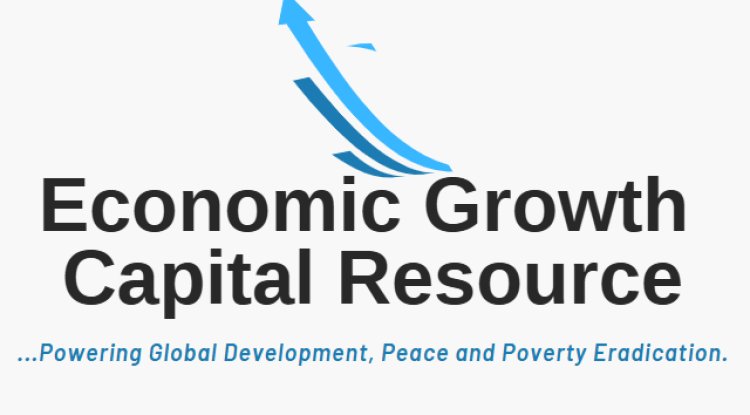ENSURING TANGIBLE AND MEASURABLE GROWTH/DEVELOPMENT
In the vast tapestry of nations, subnational territories stand as vibrant and diverse microcosms, each with a unique identity, culture, and potential for growth. Recognizing the significance of these regions, it becomes imperative to prioritize their autonomy and discretion in decision-making processes while simultaneously driving tangible and measurable development outcomes.

Subnational territories are the building blocks of a nation, encompassing cities, provinces, states, and regions with distinct characteristics and aspirations. Honoring their independence and discretion is paramount for fostering an environment where local governments and communities can thrive, tailoring their developmental strategies to address their unique challenges and capitalize on their inherent strengths.
However, ensuring tangible and measurable growth requires balancing granting autonomy and upholding shared national goals. Direct agreements entered into by subnational governments must be crafted to respect local territories' independence, providing them with the flexibility to pursue development pathways aligned with their specific needs while simultaneously contributing to broader national objectives.
The key to achieving tangible and measurable growth is formulating policies and interventions rooted in deep research and comprehensive understanding. By conducting an in-depth analysis of the local context, including socio-economic factors, cultural dynamics, and resource endowments, policymakers can identify the specific challenges and opportunities that shape each subnational territory. This research-driven approach allows for targeted investments, strategic infrastructure development, and capacity-building initiatives tailored to the unique requirements of each region, leading to tangible and measurable outcomes.
An essential aspect of ensuring measurable growth is the strategic utilization of local resources. Subnational territories often possess untapped potential regarding natural resources, cultural heritage, human capital, and geographic advantages. Leveraging these resources strategically can catalyze economic activities, foster entrepreneurship, and create employment opportunities within the region. Subnational territories can achieve sustainable development that directly benefits their communities by nurturing local industries, promoting tourism, and stimulating innovation.
Infrastructure development plays a pivotal role in unlocking the growth potential of subnational territories. Accessible transportation networks, reliable energy grids, modern healthcare facilities, quality educational institutions, and efficient digital connectivity are crucial components for fostering tangible and measurable growth. By investing in robust infrastructure, both the central and local governments can create an enabling environment that attracts businesses, facilitates trade, and enhances residents' overall quality of life.
A skilled and empowered workforce is the backbone of sustainable development. By investing in education, vocational training, and skill development programs, subnational territories can equip their residents with the necessary tools to participate actively in the economy and seize new opportunities. Fostering a culture of entrepreneurship and innovation within these regions creates an ecosystem that nurtures local enterprises, encourages job creation, and promotes economic growth from within.
Inclusive decision-making processes are fundamental to ensuring the sustainable growth of subnational territories. Governments can foster participatory governance by actively involving local communities, civil society organizations, businesses, and other stakeholders in policy formulation and implementation. This approach ensures that diverse voices are heard, local needs are addressed, and policies are responsive to the realities and aspirations of the region. Such inclusive decision-making processes contribute to achieving tangible and measurable growth outcomes.
Ultimately, ensuring tangible and measurable growth and development in subnational territories relies on a holistic approach that balances local autonomy, deep research, resource utilization, infrastructure development, human capital empowerment, and inclusive decision-making. By upholding the independence and discretion of local territories through direct agreements, governments can create an environment that fosters healthy, sustainable, and quantifiable progress, enabling subnational territories to reach their full potential and contribute significantly to the nation's overall prosperity.
wsandn.org
Setting Clear Goals And Objectives For Economic Growth
Governments have a critical role in influencing the direction and trajectory of their nations in pursuit of economic progress and prosperity. While various factors influence economic development, establishing clear goals and objectives is a fundamental cornerstone for effective governance. Governments can channel resources, attract investments, and foster an environment conducive to sustainable economic growth by delineating a strategic roadmap. Realizing the full potential of subnational economic development requires the establishment of clear goals and objectives that provide a roadmap for progress.
Clear goals and objectives serve as guiding beacons, illuminating the path toward economic growth for subnational governments. They provide a clear direction, define priorities, and establish a framework for decision-making and resource allocation. Subnational governments can align their efforts towards tangible and measurable outcomes by outlining specific targets, such as job creation, industry diversification, infrastructure development, or attracting investment.
Deep research forms the bedrock upon which clear goals and objectives are built. Subnational governments must thoroughly analyze their regional economies, including strengths, weaknesses, opportunities, and threats. Such research enables them to identify key sectors with growth potential, understand market dynamics, evaluate local resources, and identify barriers to economic development. Armed with this knowledge, subnational governments can set goals and objectives grounded in their regions' realities and potential.
Setting clear goals and objectives involves extensive consultation and engagement with various stakeholders. Subnational governments must collaborate with local businesses, industry associations, community organizations, educational institutions, and residents to ensure that the identified goals and objectives resonate with the aspirations and needs of the region. This participatory approach fosters a sense of ownership and shared responsibility, creating a collective vision for economic growth that enjoys widespread support.
One crucial aspect of setting clear goals and objectives is ensuring their alignment with national development priorities. While subnational governments have the autonomy to define their economic agendas, harmonizing their goals with the broader national framework fosters coherence and synergy. This alignment allows for coordinated efforts, resource-sharing, and leveraging of national policies and programs, maximizing the impact of subnational economic growth strategies.
Clear goals and objectives provide subnational governments with a roadmap to attract investments and create a favorable business environment. By articulating their economic vision, subnational governments can enhance investor confidence, demonstrate stability, and showcase their regions' unique advantages and opportunities. This proactive approach attracts domestic and foreign investments and encourages entrepreneurship, job creation, and industry development, fueling sustainable economic growth.
Setting clear goals and objectives empowers subnational governments to implement targeted policies and interventions. Subnational governments can focus their resources and efforts on specific economic drivers by identifying priority areas, such as infrastructure development, skills training, technology adoption, or small and medium-sized enterprises (SMEs) support. This targeted approach maximizes the efficiency and effectiveness of government initiatives, leading to tangible and measurable results.
Moreover, clear goals and objectives provide a framework for monitoring and evaluating progress. Subnational governments can establish key performance indicators (KPIs) and milestones to track the implementation of their economic growth strategies. Regular monitoring and evaluation allow for timely adjustments, identification of bottlenecks, and optimizing resource allocation, ensuring that the region stays on track toward achieving its economic goals.
Establishing clear goals and objectives for economic growth by subnational governments fosters regional cooperation and collaboration. Subnational governments can pool resources, share knowledge, and tap into regional networks through partnerships with neighboring regions, academic institutions, industry clusters, and research organizations. This collaborative approach creates a supportive ecosystem where innovation thrives and synergies are leveraged, driving sustainable and inclusive economic growth.
In essence, setting clear goals and objectives for economic growth is a crucial step for subnational governments in unlocking the full potential of their regions. Grounded in deep research and stakeholder engagement, these goals provide a roadmap for progress, align efforts with national priorities, attract investments, enable targeted policies and interventions, facilitate monitoring and evaluation, and foster regional collaboration. By establishing a clear vision for economic growth, subnational governments can pave the way for sustainable, inclusive, and prosperous futures for their communities.
wsandn.org
Implementing Effective Performance Measurement Systems
In the ever-changing landscape of economic growth and development, the ability to measure and assess progress is paramount. Governments and policymakers worldwide increasingly recognize the importance of implementing effective performance measurement systems to drive economic growth, optimize resource allocation, and foster sustainable development. These systems provide valuable insights into the effectiveness of policies, programs, and initiatives, enabling informed decision-making and paving the way for a prosperous future.
Effective economic management necessitates incorporating sophisticated performance measurement tools that allow governments to analyze their success, identify areas for development, and make educated policy decisions. This comprehensive approach ensures that economic development efforts are aligned with desired outcomes and contribute to the region's overall well-being.
The Importance of Performance Measurement Systems in Economic Development
Performance measurement systems are essential for assessing economic development initiatives' success and impact. These systems provide a framework for monitoring and evaluating the performance of various sectors, programs, and policies implemented by sub-national governments. By establishing clear performance indicators and benchmarks, governments can track their progress, identify gaps, and make data-driven decisions to drive economic growth effectively.
Adapting to the Changing Dynamics of Economic Development
Economic development is an ever-evolving process influenced by external and internal factors. Sub-national governments must recognize the importance of aligning performance measurement systems with the changing dynamics they operate. Regular revisions of these systems ensure that they remain relevant and reflect the evolving priorities and challenges of the region.
Please update performance measurement systems to ensure consistency between actual performance and the data collected, hindering effective decision-making. With technological advancements, collecting large volumes of data has become more accessible. However, without an effective performance measurement system, the collected data may lack clarity and fail to provide meaningful insights for informed actions.
wsandn.org
Effectiveness and Efficiency in Performance Measurement Systems
In the pursuit of economic development, a balance must be struck between effectiveness and efficiency within performance measurement systems. While efficiency focuses on properly doing things, effectiveness emphasizes doing the right things that contribute to the overall goals of the sub-national government. It involves optimizing resource allocation and ensuring that efforts align with the desired outcomes.
Sub-national governments must adopt a 360-degree evaluation approach to achieve comprehensive performance measurement. This means considering all aspects of the business cycle and integrating various dimensions relevant to economic development. By implementing effective and efficient performance measurement systems, governments can enhance their operations, identify non-performing areas, and promote continuous improvement.
Ensuring Standardized Output and Highlighting Non-Performing Areas
Performance measurement systems play a vital role in ensuring that all areas of the economic development process meet specific output standards. These systems enable sub-national governments to assess whether programs and initiatives deliver the desired results. If any areas fall short, the systems facilitate the identification of non-performing reasons and other aspects requiring attention and improvement.
Comprehensive performance measurement systems enable governments to evaluate the effectiveness of policies and initiatives across the entire economic development cycle. Sub-national governments receive significant insights into the strengths and limitations of their operations by undertaking a comprehensive analysis, allowing them to make strategic adjustments and achieve genuine change.
Implementing effective performance measurement systems is critical to driving economic development at the sub-national government level. Governments can assess their progress, optimize resource allocation, and make informed decisions by establishing comprehensive frameworks that align with evolving dynamics. The integration of effectiveness and efficiency ensures that the right actions are taken to achieve desired outcomes while maximizing the utilization of available resources.
As sub-national governments strive for economic growth and prosperity, investing in robust performance measurement systems becomes increasingly crucial. By adopting a 360-degree evaluation approach, highlighting non-performing areas, and emphasizing standardized output, governments can continuously improve their operations and make significant contributions to the economic development of their territories. Through the effective implementation of performance measurement systems, sub-national governments pave the way for sustainable and inclusive growth, benefiting their communities and fostering a prosperous future.




















